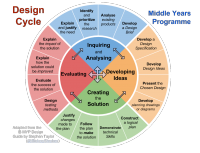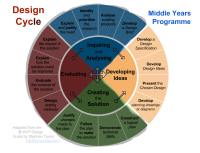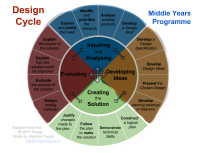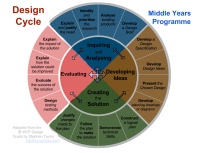Random present selector
Your job is to design a random gift suggestions – Enter various gifts for certain people when you think of them. When its time to give them a gift (xmas, birthday, anniversary) it will randomly pick one and perhaps places you can get it.
Inquiring and Analyzing[edit]
Explain and justify the need for a solution to a problem for a specified client/target audience[edit]
This is where I am going to explain and justify the need for my design. Specifically, I am going to:
- explain the need for a solution to a problem for a client/target audience
People need ideas, because their brains can't always generate good ideas for gifts. I want my design to work for any gender, nationality/race and any age ranges. I want the user to be able to select the gender and age range so that it will be more convenient.
- justifies the need for a solution to a problem for a client/target audience
The prove for this need is when I see people give dumb things.
- describe my client/target audience
If I had to pick one client, it would be female asian 10-15 yrs. old. Budget doesn't matter, I guess.
- I will complete this sentence: I have chosen this problem because many people have problems finding gifts for people. My solution will make the world a better place by helping people find gift ideas easily.
Identify and prioritize the primary and secondary research needed to develop a solution to the problem[edit]
This is where I will discuss what type of research I need to do. Specifically, I will:
- State the main points of research needed to develop a solution to the problem
Interview or http://www.gifts.com/finder or http://www.wikihow.com/Find-the-Perfect-Gift Find personality, gender, race and age.
- Prioritize the main points of research needed to develop a solution to the problem
Interview or http://www.gifts.com/finder or http://www.wikihow.com/Find-the-Perfect-Gift
Analyse a range of existing products that inspire a solution to the problem[edit]
This is is where I will list existing products that inspire a solution. Specifically, I will:
- Describe the main features of an existing product that inspires a solution to the problem
They ask for gender (male and female). They ask for age (baby/toddler, girl, teenager, adult, senior). They ask for personality and ask you to select (active, lazy, likes food, intelligent, dumb...)
- List at least 3 different products that are similar to my solution
http://www.gifts.com/finder or http://www.wikihow.com/Find-the-Perfect-Gift or http://www.randomlygifted.com
Develop a detailed design brief which summarizes the analysis of relevant research[edit]
This is where I will present my main findings. Specifically I will:
- Present the main findings of relevant research
I propose to design a product that helps people choose a gift. First I have to ask for gender, age, race and personality.
-- dont worry about stuff below this line yet --
Developing Ideas[edit]
Students write a detailed specification, which drives the development of a solution. They present the solution.
In order to reach the aims of design, students should be able to:
Develop a design specification which clearly states the success criteria for the design of a solution[edit]
Must be able to generate appropriate gift for specific audience. Asks for race, age, gender and personality. Also it would be good to know the price range and occasion, so that the results are not too random.
Develop a range of feasible design ideas which can be correctly interpreted by others[edit]
From flowers to electronics and jewelries. That's my range.
Present the final chosen design and justify its selection[edit]
Develop accurate and detailed planning drawings/diagrams and outline the requirements for the creation of the chosen solution.[edit]
Creating the Solution[edit]
Outline a plan, which considers the use of resources and time, sufficient for peers to be able to follow to create the solution[edit]
Demonstrate excellent technical skills when making the solution[edit]
Follow the plan to create the solution, which functions as intended[edit]
List the changes made to the chosen design and plan when making the solution[edit]
Present the solution as a whole[edit]
Evaluating[edit]
Outline simple, relevant testing methods, which generate data, to measure the success of the solution[edit]
Outline the success of the solution against the design specification[edit]
Outline how the solution could be improved[edit]
Outline the impact of the solution on the client/target audience[edit]
Grading[edit]
The grading rubric for each section is not finished yet, but when it is, it will be here. This is an example reference to help you understand how to use references[1]




